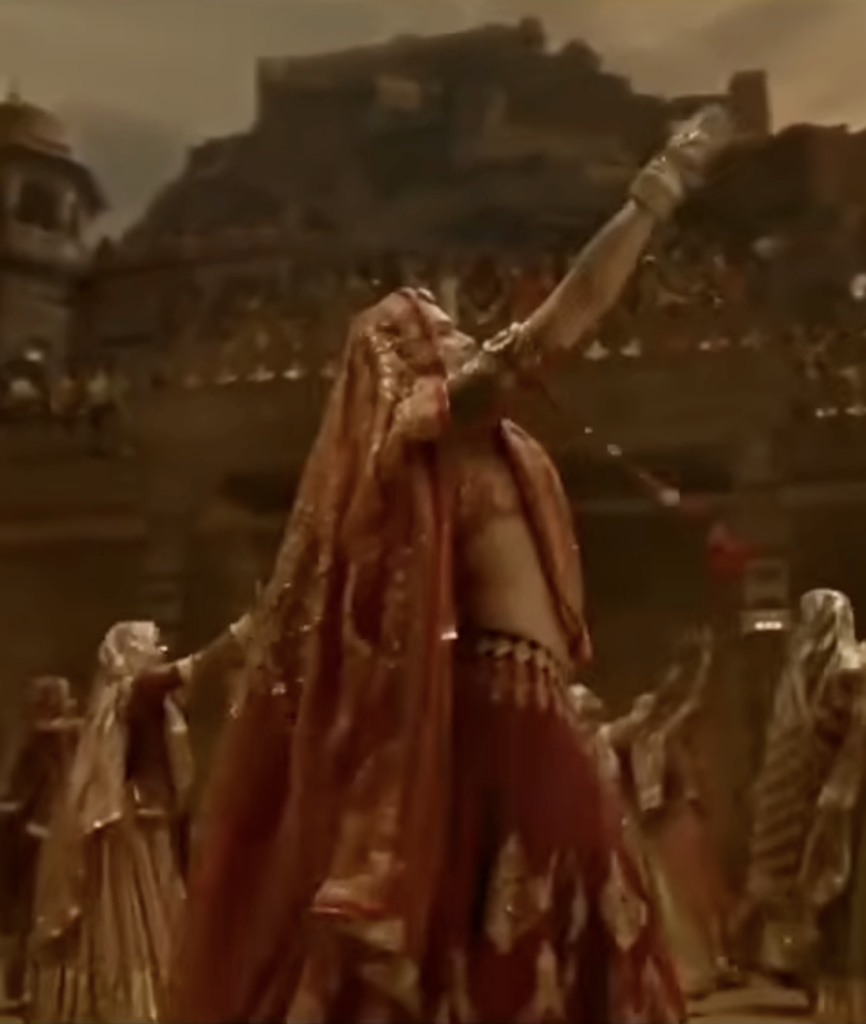In this final blog entry, I want to reflect on the digital fashion design process, especially compared to the traditional fashion design process and approaches I discussed in the previous entry. With this exploration, I want to relay the experiences I have had so far while designing digital clothing pieces that are meant to be digital end products and anticipate possible challenges as well as opportunities for new creative potential.
Just as in the traditional fashion design process, the starting point for digital fashion design is often a phase of intensive research and collecting sources of inspiration. As opposed to the traditional design process, the sources this inspiration might be drawn from can gravitate towards digital instances. It is common that the final environment the design will be shown in influences the process of collecting impulses. In traditional design, this accordingly can include historical and cultural influences, art, nature, and personal experiences1. The digital process can very well include the step of creating a mood board to organise ideas through images, color palettes, textures, and patterns for inspiration2. Overall, this step of the process can look very similar to the analog fashion design process with a possible wider range of inspiration sources that can be included.
In the conceptualisation and sketching phase, my experience has shown that for a digital design, the tools for this step are more likely to be digital. In my processes so far, I have used reference materials and 3D models to capture the general direction I want for the final garment. I have also found that the sketching process is less important to me, because I have felt that moving straight into the 3D program and starting to model is sometimes easier and the more direct root for externalising my thoughts and explore possibilities.
Design boards are a step I have skipped in the digital process so far, but since I have so far only designed individual digital pieces, I might incorporate the creation of a design board for the development of a cohesive collection. Showcasing each design’s fabrics, colours, and details, will be important to visualise how the pieces will work together in a cohesive collection2.
In the fabric selection step, the digital process differs most significantly from the traditional process. Since there is no tangible fabric, the selection of digital “materials” depends much more on their behaviour and movement on the model. What I found interesting in the digital process is that I can test different materials straight on the finished or in-progress model of the piece. I can make a pre-visualisation and see how the chosen material moves, how it works with the cut of the piece and if it has any behaviours that do not work with the piece. From the factors influencing fabric selection in the traditional fashion design process – such as weight, texture, drape, durability, and maintenance requirements2 – only the factors of texture, weight and drape can really translate into the digital process.
Creating prototypes or samples is significantly more integrated with the concept phase in digital fashion design. The lines between sketching, prototyping, and final product are not as strict because changes are more easy to make on digital garments. Testing the fit, functionality, and appearance of the designs on real or dummy models in the traditional fashion design process usually translates to testing the garment on an animated moving model in the digital process. In this stage, it is crucial to see if the digital model creates problems in the interaction with the movement of the model, such as clipping or unanticipated movements.
The question of sustainability is also relevant for digital fashion design. Digital fashion has been discussed as a vehicle for enabling a more sustainability in the fast-paced fashion system3. Short-lived trends and experimental ideas can be explored more quickly and without resource waste in the digital space. It should be noted however, that digital tools can also be a strain on the environment, especially when they require high computing power such as 3D rendering.
The fashion design process, whether traditional or digital remains a complex journey that combines creativity, technical skill, and market awareness. The iterative nature of the process is even more prominent in the digital process, with a higher potential for designers to constantly evaluate and adjust their ideas throughout the development of a collection. One significant feature of the digital design process that has already come to light in my limited experience is the more fluent progression through the design steps. While the fluency is also present in the traditional process, the malleability of digital objects makes it even easier and invites it even more. Through my masters thesis, I hope to gain even more insights and make more concrete observations on the digital fashion design process and contribute to the establishment of the digital fashion design field in design research.
1 Kapoor, “Fashion Designing and Fashion Trends in Current Scenario.”
2 Southwell, “Starting a Collection: The Fashion Design Process Explained.”
3 Driever, “Digital Fashion and the Environment – Can ‘Digital Fashion’ Be Used as a Medium for Sustainability in the Fashion Industry?”
Sources:
Driever, Anne B. C. Digital Fashion and the Environment – Can “Digital Fashion” Be Used as a Medium for Sustainability in the Fashion Industry?, 2023.
Kapoor, Deepa. “Fashion Designing and Fashion Trends in Current Scenario.” International Journal for Research in Applied Science and Engineering Technology 11, no. 1 (January 27, 2023): 1491–94. https://doi.org/10.22214/ijraset.2023.48852.
Southwell, Elaine. “Starting a Collection: The Fashion Design Process Explained.” Elaine Southwell Designs (blog), November 30, 2023. https://elainesouthwelldesigns.com/fashion-design-process-2/.













